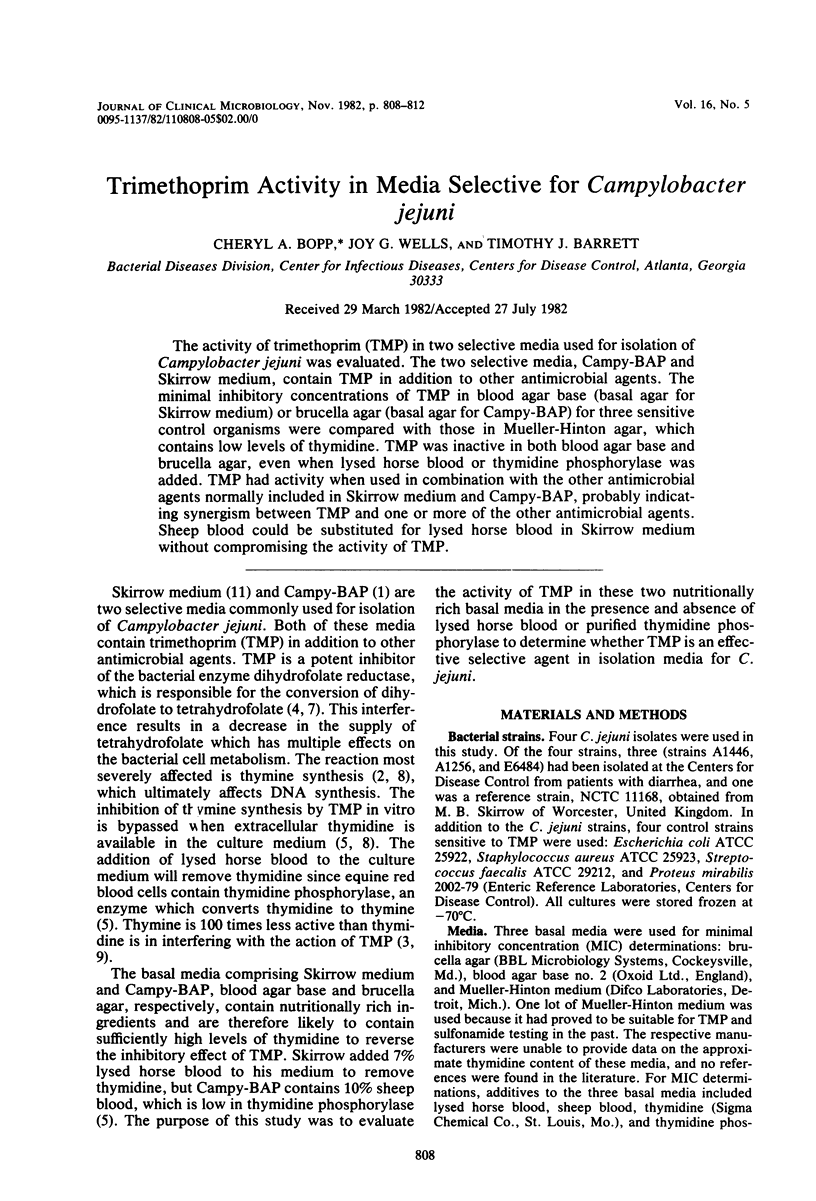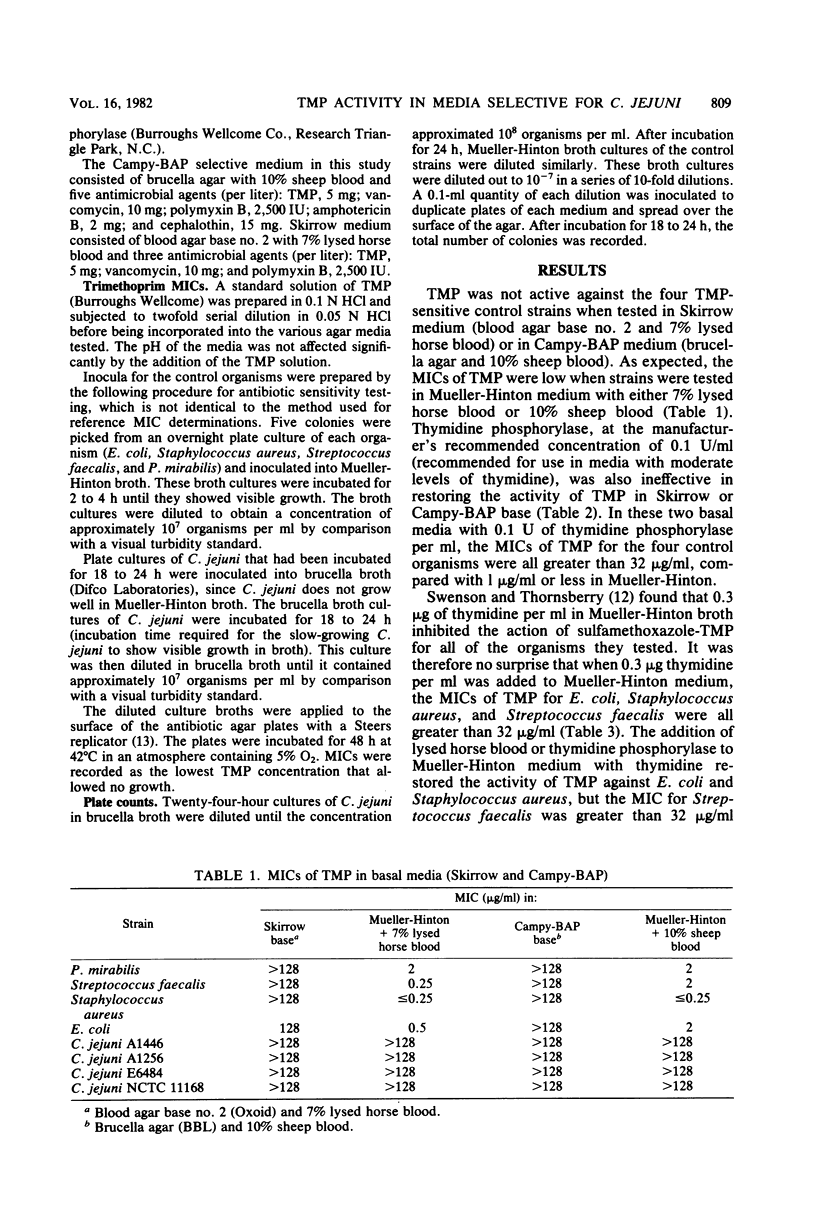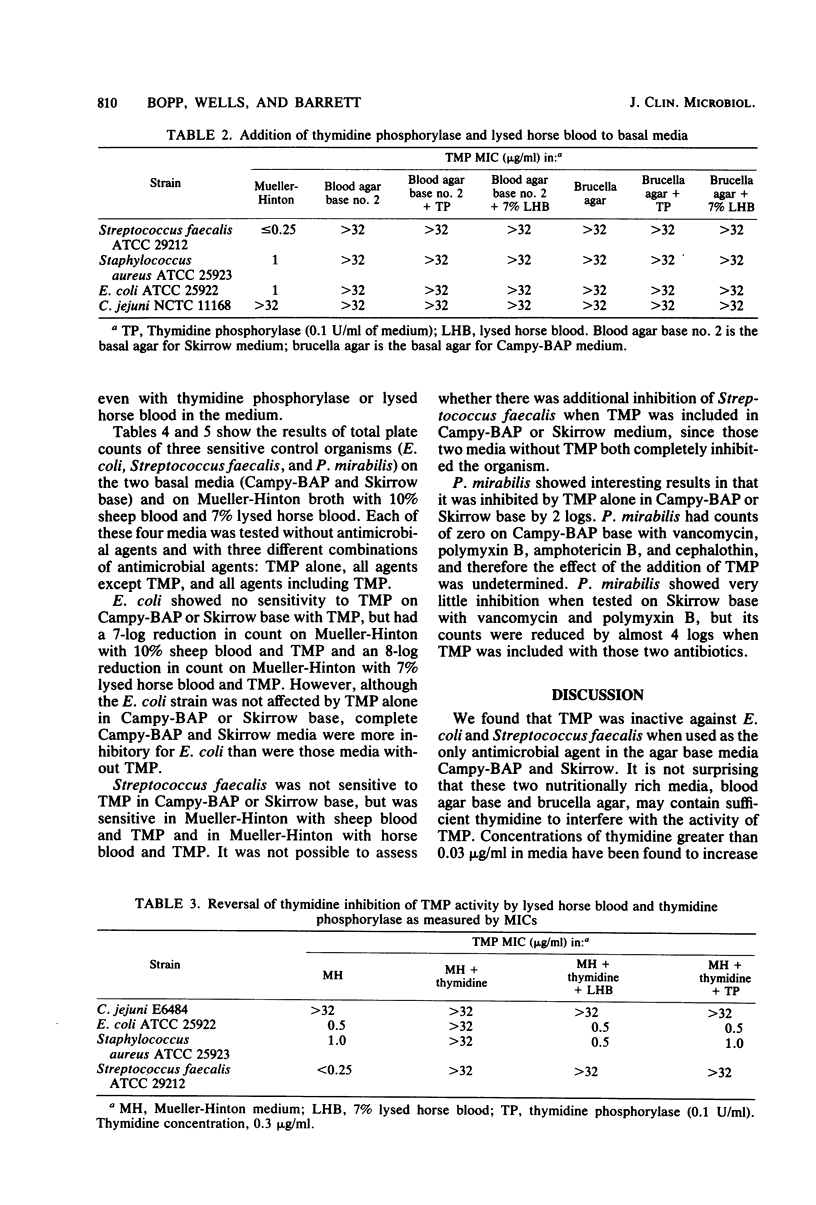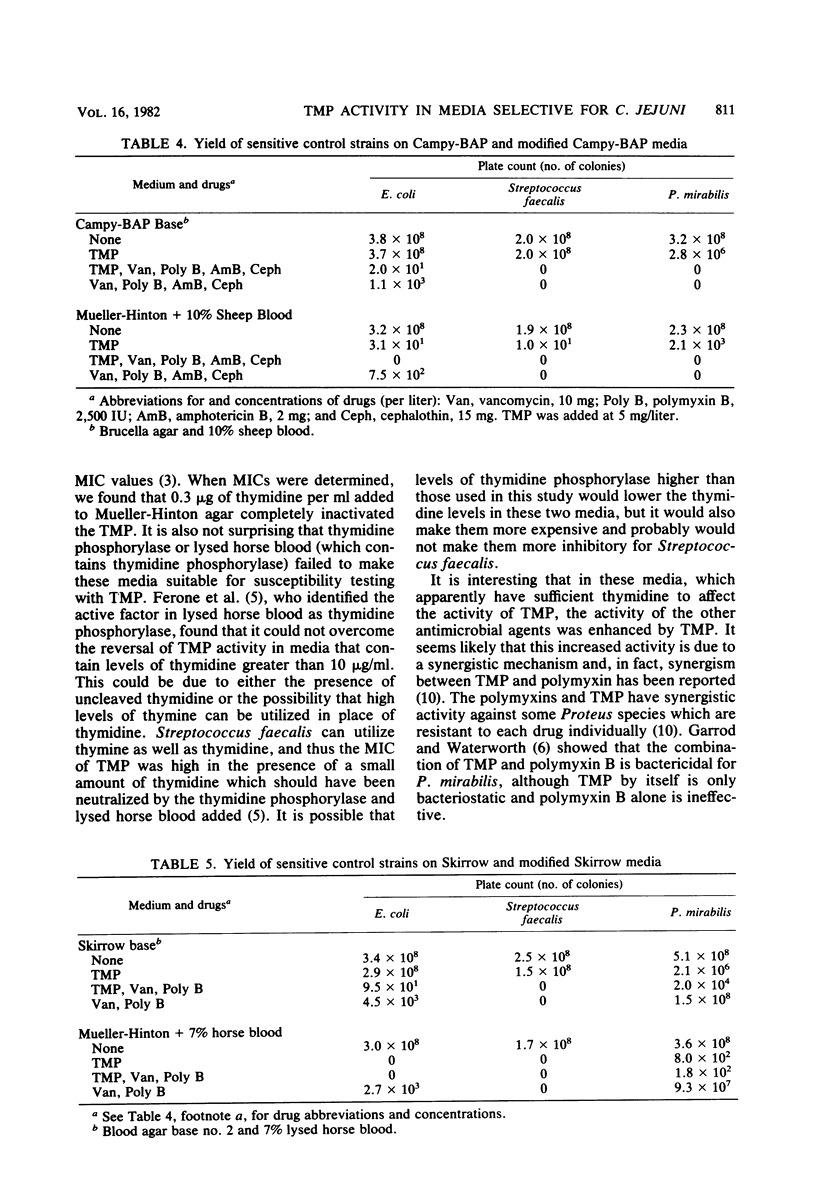Abstract
The activity of trimethoprim (TMP) in two selective media used for isolation of Campylobacter jejuni was evaluated. The two selective media, Campy-BAP and Skirrow medium, contain TMP in addition to other antimicrobial agents. The minimal inhibitory concentrations of TMP in blood agar base (basal agar for Skirrow medium) or brucella agar (basal agar for Campy-BAP) for three sensitive control organisms were compared with those in Mueller-Hinton agar, which contains low levels of thymidine. TMP was inactive in both blood agar base and brucella agar, even when lysed horse blood or thymidine phosphorylase was added. TMP had activity when used in combination with the other antimicrobial agents normally included in Skirrow medium and Campy-BAP, probably indicating synergism between TMP and one or more of the other antimicrobial agents. Sheep blood could be substituted for lysed horse blood in Skirrow medium without compromising the activity of TMP.
Full text
PDF




Selected References
These references are in PubMed. This may not be the complete list of references from this article.
- Blaser M. J., Berkowitz I. D., LaForce F. M., Cravens J., Reller L. B., Wang W. L. Campylobacter enteritis: clinical and epidemiologic features. Ann Intern Med. 1979 Aug;91(2):179–185. doi: 10.7326/0003-4819-91-2-179. [DOI] [PubMed] [Google Scholar]
- Bushby S. R. Trimethoprim-sulfamethoxazole: in vitro microbiological aspects. J Infect Dis. 1973 Nov;128(Suppl):442–p. doi: 10.1093/infdis/128.supplement_3.s442. [DOI] [PubMed] [Google Scholar]
- Eisenstadt J., Lengyel P. Formylmethionyl-tRNA dependence of amino acid incorporation in extracts of trimethoprim-treated Escherichia coli. Science. 1966 Oct 28;154(3748):524–527. [PubMed] [Google Scholar]
- Ferone R., Bushby S. R., Burchall J. J., Moore W. D., Smith D. Identification of Harper-Cawston factor as thymidine phosphorylase and removal from media of substances interfering with susceptibility testing to sulfonamides and diaminopyrimidines. Antimicrob Agents Chemother. 1975 Jan;7(1):91–98. doi: 10.1128/aac.7.1.91. [DOI] [PMC free article] [PubMed] [Google Scholar]
- GARROD L. P., WATERWORTH P. M. Methods of testing combined antibiotic bactericidal action and the significance of the results. J Clin Pathol. 1962 Jul;15:328–338. doi: 10.1136/jcp.15.4.328. [DOI] [PMC free article] [PubMed] [Google Scholar]
- Hitchings G. H., Burchall J. J. Inhibition of folate biosynthesis and function as a basis for chemotherapy. Adv Enzymol Relat Areas Mol Biol. 1965;27:417–468. doi: 10.1002/9780470122723.ch9. [DOI] [PubMed] [Google Scholar]
- Koch A. E., Burchall J. J. Reversal of the antimicrobial activity of trimethoprim by thymidine in commercially prepared media. Appl Microbiol. 1971 Nov;22(5):812–817. doi: 10.1128/am.22.5.812-817.1971. [DOI] [PMC free article] [PubMed] [Google Scholar]
- McKeown M., Kahn M., Hanawalt P. Thymidine uptake and utilization in Escherichia coli: a new gene controlling nucleoside transport. J Bacteriol. 1976 May;126(2):814–822. doi: 10.1128/jb.126.2.814-822.1976. [DOI] [PMC free article] [PubMed] [Google Scholar]
- Rosenblatt J. E., Stewart P. R. Combined activity of sulfamethoxazole, trimethoprim, and polymyxin B against gram-negative bacilli. Antimicrob Agents Chemother. 1974 Jul;6(1):84–92. doi: 10.1128/aac.6.1.84. [DOI] [PMC free article] [PubMed] [Google Scholar]
- Skirrow M. B. Campylobacter enteritis: a "new" disease. Br Med J. 1977 Jul 2;2(6078):9–11. doi: 10.1136/bmj.2.6078.9. [DOI] [PMC free article] [PubMed] [Google Scholar]


